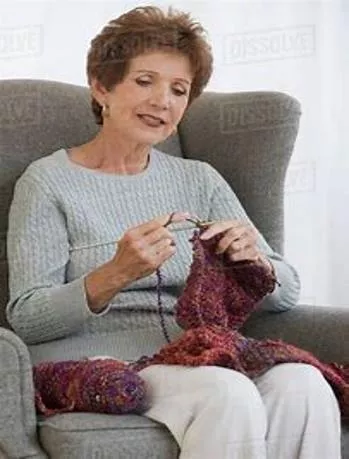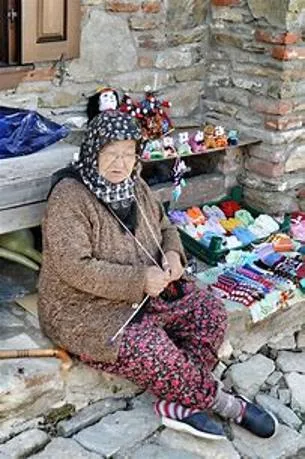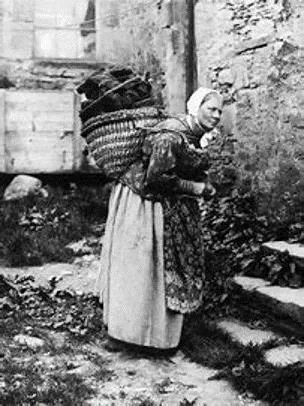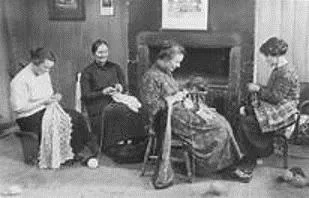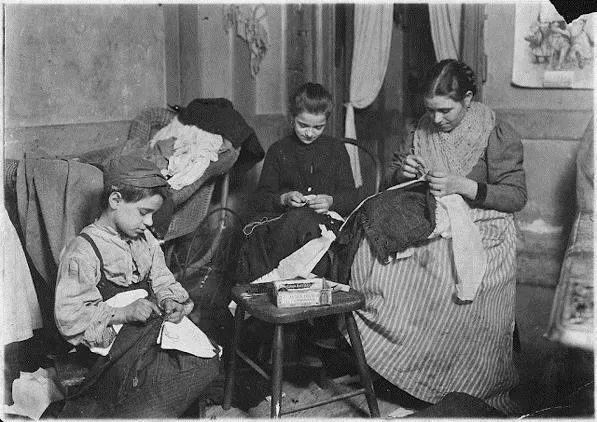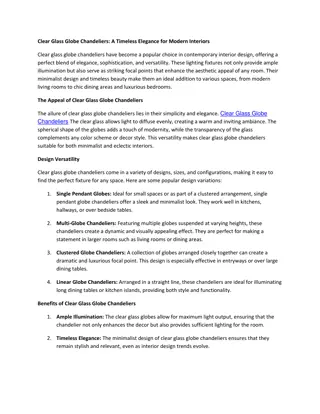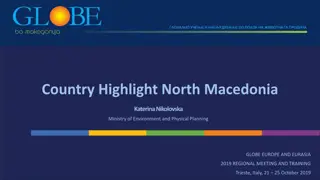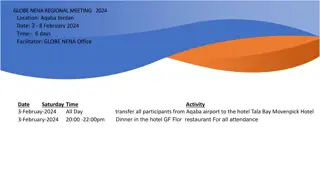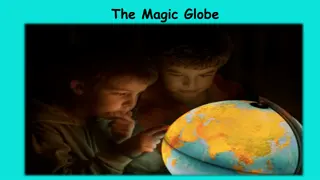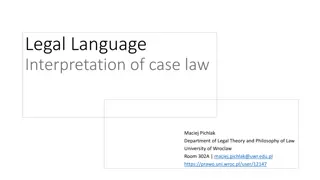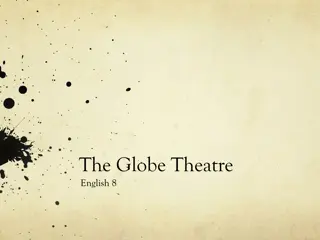Understanding Knitting Techniques Around the Globe
Knitters worldwide employ diverse techniques to achieve the same fabric, showcasing unique methods of tensioning yarn and finger movements. Discover the nuances behind tensioning, how it impacts stitch definition, and the factors influencing yarn tension. Explore the significance of finger movement in knitting and how varying styles can alleviate discomfort from repetitive motions.
Download Presentation

Please find below an Image/Link to download the presentation.
The content on the website is provided AS IS for your information and personal use only. It may not be sold, licensed, or shared on other websites without obtaining consent from the author. Download presentation by click this link. If you encounter any issues during the download, it is possible that the publisher has removed the file from their server.
E N D
Presentation Transcript
KNITTING AROUND OUR GLOBE C Suzanne Alcala
Knitters around the world use different ways to achieve the same fabric and we are going to explore these unique techniques as well some of the background to them. Each method uses a different way of tensioning the yarn and some minimize the movement of the fingers.
NOTES Here we see women from different times knitting in different styles. Today we are going to talk about these techniques and their backgrounds . We will be seeing short videos that I found for each style because it is easier to see it being done rather than hearing a description. After all knitting is both a textile and visual craft.
Tensioning How tight or loose your stitches are. Too tight and the fabric will pull in. Too loose and you have gaps or hole.
Tensioning notes When we talk about tensioning we mean how tight or loose the stitches are. This happens when the yarn you are holding in your hand, known as the working yarn, is either held tightly or loosely. If its too tight then your fabric has no give. Too loose and is has little structure. Either way you will not have good stitch definition.
Ways that also can affect tension of the yarn.
Notes Here we see some other ways that can change your tension. If the working yarn is used from a knitting bowl or yarn holder and the ball or cake is wound tightly there will be a little drag on the strand. We will talk about the pin in Portuguese knitting. If it passes through a yarn ring depending on where the ring is placed on the finger this can also cause tightness. Now if the ball runs free you only have to worry about the cat or dog running off with it!
Finger Movement Each knitting method uses your fingers and wrists in a slightly different way.
Notes Finger Movement How we hold and use our fingers and wrists is important. You may find that your hands have become sensitive to certain repetitive movements and changing your style could help alleviate this. Remember we knit to relax and enjoying the craft not to be in discomfort.
Knitting Styles English or throwing Continental or picking Lever or Irish Cottage or Pit or flicking Portuguese Shetland or Scottish
English English is also known as American, and in Japan it is called French. It is called throwing. While it is common in the British Isles and North America, English knitting is practiced by knitters all over the world.
English notes Many of us know this as throwing vs picking because we appear to throw the working yarn in between the needles. The yarn is held in the dominant hand which is usually the right hand and side. It is called English because it is from the Western part of the worl.d
Continental Continental is also known as German or European and is called picking. Some crocheters who are learning how to knit often find that Continental feels more natural in their hands.
Continental notes The knitter holds the yarn with the left hand which tends to be the non-dominant hand. Instead of throwing the working yarn the right needle picks it up the from either between the first and middle fingers or on the index finger. .
Knitting Purling
Within Continental knitting there are two more specific styles. These are Norwegian and Russian.
Norwegian The Norwegian style of knitting is distinct because of the way purl stitches are worked. Arne and Carlos are the experts in this knitting style.
Norwegian notes The Norwegian purl is worked with the yarn in back. This puts the working yarn in the left hand, which makes it a variant of continental. the knit stitches are worked just like the regular continental style. Arne and Carlos are the experts in this knitting style and they are the best at showing it.
Arnie and Carolos Norwegian Purl revisited https://www.bing.com/videos/search?q=arne+and+carlos+norwegian+purl&&view=detail&mid =0B18710AB9F9B7A6920E0B18710AB9F9B7A6920E&&FORM=VRDGAR&ru=%2Fvideos%2Fsea rch%3Fq%3Darne%2Band%2Bcarlos%2Bnorwegian%2Bpurl%26FORM%3DHDRSC4 I edited the video to start at 6:14 and go thru to 9:52
Russian Russian knitting is very similar to regular continental, and the knit and purl stitches themselves are worked in the same way. There is a different purl that is called Grandma style that we will talk about in combination knitting.
Russian Notes The only distinction with Russian knitting is that the working yarn is wrapped around the pointer finger of the non-dominant hand, very close This makes for a very tight hold that allows you to flick the yarn over the tip of the needle instead of picking it with the needle. This style is similar to lever knitting
Russian Knitting Video https://www.youtube.com/watch?v=wAWGCfiXdP4 I edited the video from 1:13 to 3:38
Lever Lever knitting is also known as Peruvian, Catholic, Australian, Pit and Irish Cottage. It is called flicking. Stephanie Pearl-McPhee, also known as the Yarn Harlot, famously uses this technique to knitting at lightning fast speeds.
Lever notes Irish Cottage seems to be the most common name. The long needle is anchored in the right armpit. the knitter holds the working yarn in the right hand, loops the yarn around the needle without removing hand from the needle completely, creating a sort of back-and-forth levering motion hence the name lever. Many knitters who use this style hold their working needle like a pencil, which frees up their pointer finger to hold the tension of their yarn and "flick" it around the end of the needle.
Circular Irish Cottage no hyperlink cut and paste https://www.bing.com/videos/search?q=lever+knitting+tutorial&&view=detail&mid=E40F05FE BBFB06F96723E40F05FEBBFB06F96723&&FORM=VRDGAR&ru=%2Fvideos%2Fsearch%3Fq%3 Dlever%2520knitting%2520tutorial%26qs%3DHS%26form%3DQBVDMH%26%3D%2525eMana ge%2520Your%2520Search%2520History%2525E%26sp%3D1%26lq%3D0%26pq%3Dlever%2520 k%26sc%3D10-7%26cvid%3DF114F8E89D5646AD82D834BDE14241BB Lever / speed knitting no hyperlink cut and paste https://www.bing.com/videos/search?q=lever+knitting+tutorial&&view=detail&mid=D8AADB5 97905A5D47FFCD8AADB597905A5D47FFC&&FORM=VRDGAR&ru=%2Fvideos%2Fsearch%3 Fq%3Dlever%2520knitting%2520tutorial%26qs%3DHS%26form%3DQBVDMH%26%3D%2525e Manage%2520Your%2520Search%2520History%2525E%26sp%3D1%26lq%3D0%26pq%3Dlever %2520k%26sc%3D10-7%26cvid%3DF114F8E89D5646AD82D834BDE14241BB
Portuguese Portuguese knitting is done around the world. Portuguese knitters wrap the yarn around the back of their necks or use a pin on the lapel. This style frees up the fingers for speed and the tension on the yarn is from around the neck. This technique can also help with knitting pain in the hands.
Portuguese notes This is unique in that it is about the tension of the yarn In every other knitting style, the tension is held in the hands; this gives your hands two jobs to do at the same time -- holding the yarn and working the stitches with the needles. When the tension is held around the neck, there's one less thing you have to worry about when making your stitches. This technique can also help with knitting pain in the hands because so much of the stress comes from holding the yarn. If knitting with the yarn around your neck is a little too out of the box for you, you can also get a Portuguese knitting pin that attaches to your shirt and holds the tension there.
Portuguese knitting no hyperlink cut and paste https://www.bing.com/videos/search?q=portuguese++knitting+video&&view=detail&mid=BBF 937C0B2966522854ABBF937C0B2966522854A&&FORM=VRDGAR&ru=%2Fvideos%2Fsearch% 3Fq%3Dportuguese%2520%2520knitting%2520video%26qs%3DHS%26form%3DQBVRMH%26 %3D%2525eManage%2520Your%2520Search%2520History%2525E%26sp%3D2%26lq%3D0%26 pq%3Dportug%26sk%3DHS1%26sc%3D10- 6%26cvid%3DA18010D2FF26497392F28D79281E00DE The Chilly Dog Portuguese Knitting
Shetland Shetland knitting is also known as Scottish, Shetland, From the Hip and Old Way. This style uses a knitting belt and very long needles. This style is very similar to the style used by Hazel Tindall, who is often considered the world's fastest knitter.
Shetland notes If you're picturing a woman standing in the Scottish highlands with a knitting needle attached to a belt around her waist and knitting, that's pretty close. The Shetland style of knitting goes by many names, but it's recognizable because of the way the working needle is held against the body. Because the dominant hand doesn't have to worry about holding the tension of the yarn and the working needle at the same time, this style of knitting is much faster. Shetland knitting is also a way of knitting that can easily be done standing up. It was designed as a way for knitters to quickly work up garments while also working on other chores. As if we don t already do enough!
The belt has several holes for the double point needle for an adjustable fit. People say that this way of knitting allows them to stop to do something else with their hand such as cooking or cleaning and then pick up again.
https://www.youtube.com/watch?v=MKDA63_DT4s Faire Isle knitting demo Shetland Island, UK By ybmagpye
Combination Combination knitting can refer to a way to purl easier when continental knitting. You need to remember that this creates an Eastern mount stitch on the reverse side. This can also be called Russian purl or Russian Grandma purl.
Combination notes Instead of wrapping the working yarn counter clockwise you wrap clockwise so you are holing and pulling through with out moving your left finger down. This does create an eastern mount stitch when you work the stitch on the next row and you need to knit or purl into the back to correctly mount or untwist the stitch
Eastern vs Western vs Combination Knitting Video https://www.youtube.com/watch?v=ogG0oPJWOJA This video was edited from 4:32 to 6:55
Eastern vs Western mounts how to recognize them and how to work them
Eastern vs Western notes How the stitch sits on the needle determines whether it is an Eastern or Western mount. It doesn't matter which style you knit with - rather how you enter the stitch and wrap the yarn that defines the mount.
Western mount vs Eastern mount Left is Eastern the leading leg (first part of stitch from right to left) is behind the needle Right is Western the leading leg is in front of the needle
Wrapping the yarn around the needle clockwise will result in an Eastern mount stitch. When you come to the other side you will need to knit or purl the stitch through the back or leading edge to prevent a twisted stitch.
Knitting Methods Combination Western Eastern Knit Stitches Leading leg in front Leading leg in back Leading leg in front Purl Stitches Leading leg in front Leading leg in back Leading leg in back Counter-clockwise for knit (right-handed) Clockwise for purl (right-handed) Counter-clockwise (for right-handed) Clockwise (for right-handed) Yarn Wrap Worked through back loop for knits Worked through front loop for purls Worked through front loop Worked through back loop Stitches Worked through front loop for knits Worked through back loop for purls Worked through back loop Worked through front loop Twisted Stitches
Final notes Often you might hear someone say one way versus another makes for faster knitting but I think there are too many variables such as needle choice, yarn choice, pattern choice and muscle memory. Of course the more you repeat a style the easier it becomes. But in the end its all about the relaxed state of mind and enjoyment knitting brings you.
I hope you have been introduced to a new style of knitting and will think about trying it. Get comfortable and be adventurous! After all every time we learn a new stitch or make a new pattern we are adding to our basket of skills!
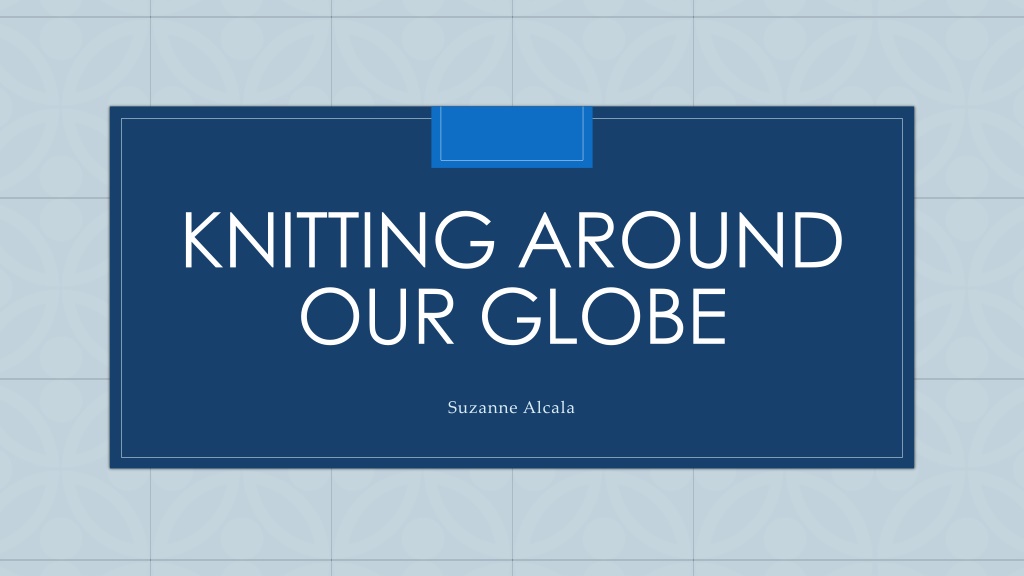
 undefined
undefined







